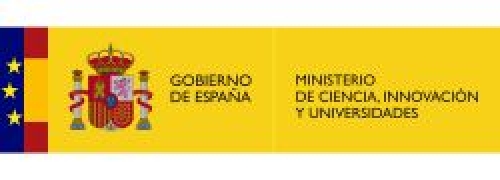
• Some of these patients had been waiting for a diagnosis for over 8 years.
• The results of this study will help 23 children, treated at Hospital Sant Joan de Déu (Barcelona), understand the origin of their disease and potentially receive treatments to improve their quality of life.
• The research, published in the scientific journal European Journal of Human Genetics, has been enabled by SolveRD, a project funded by the European Commission, in which Hospital Sant Joan de Déu and the Centro Nacional de Análisis Genómico (CNAG) participate.
November 28th, 2024. Neuromuscular diseases affect between 8 and 16 million people worldwide, corresponding to 0.1 to 0.2% of the global population. This small percentage, coupled with the heterogeneous symptoms exhibited by patients, makes establishing a diagnosis highly complex. This is the diagnostic odyssey faced by many families affected by rare diseases that begin in childhood, often resulting in years of waiting for diagnosis. Since 80% of rare diseases have a genetic origin, scientists focus on identifying the genes responsible. This is exactly what a team of researchers from the Sant Joan de Déu Research Institute (IRSJD) and the Centro Nacional de Análisis Genómico (CNAG) has done. Through an innovative genetic analysis approach, they have contributed to the diagnosis of 23 children with neuromuscular diseases, ending a diagnostic odyssey that, in some cases, lasted more than 8 years.
The results, published in the scientific journal European Journal of Human Genetics, are part of a study involving a total of 58 paediatric patients from Hospital Sant Joan de Déu. All are affected by various types of neuromuscular diseases, presenting muscle weakness or loss of muscle mass, and none had been genetically diagnosed previously despite having undergone exome sequencing, a genomic technique that studies the part of the DNA which codes for proteins, where mutations associated with these diseases are usually found. Reanalysis of undiagnosed patients' data, a growing practice in the field of rare diseases, is crucial due to the constant advance of scientific knowledge and the discovery of new genes associated to rare diseases. This approach typically helps find a molecular diagnosis in approximately 15% of cases, while this new genetic analysis has increased this success rate to 40%.
-24.jpg)
According to Dr. Leslie Matalonga, author of the study and Clinical Genomics Manager at CNAG: “The methodology we have applied in this study (whole genome sequencing and the integration of other omics techniques) is key to finding the diagnosis of patients who do not have one. However, this implementation is costly for healthcare systems, and in most cases, it is carried out within the context of research projects. At CNAG, we are also working on the development of tools and methodologies to automate these processes as much as possible and facilitate their future integration into hospital routines, thus reducing diagnostic times”.
For the affected families, having a confirmed diagnosis is an essential step towards receiving potential treatments that could improve their quality of life and, in some cases, even stop progression of the disease. It also provides them with information about the potential for transmission of the disease to future generations.
Martí, a 10-year-old boy from Terrassa, is one of the patients who has received a diagnosis through this study. Specifically, he has been diagnosed with an ultra-rare disease called GLDN Protein Deficiency, which only affects 4 people worldwide. According to Pilar, Martí's mother, “In our case, we have managed to give a name to the disease, but since it is an ultra-rare condition, there is currently no treatment, and we have to keep relying on research and the support provided by our son's healthcare team”.
The new genetic analysis approach increases paediatric diagnoses
In the past 14 years, the number of genes known to be associated with the development of neuromuscular diseases has doubled. Thanks to next-generation sequencing, nearly 700 genes have been identified to date. Despite this progress, more than half of the families affected by a neuromuscular disease still do not know the origin of their condition. The approach implemented by the IRSJD and CNAG research teams is specifically designed to help this group of patients. This innovative analysis integrates the benefits of different omics techniques, allowing the combination of a greater quantity of clinical and genetic data, thereby increasing the chances of identifying new diagnoses in paediatric patients.
The new analysis approach starts with a deep phenotyping effort on the patient undertaken by the medical team at Hospital Sant Joan de Déu. “This comprehensive work includes the standardised collation of symptoms and results from a wide range of tests such as magnetic resonance imaging, neurophysiological or laboratory data”, as stated by Dr. Daniel Natera, pediatric neurologist at the Neuromuscular Unit of the Hospital Sant Joan de Déu.
After this detailed evaluation of the patients' symptoms, two complementary omics techniques are applied for the genetic analysis. First, trio genome sequencing, which involves obtaining the complete DNA sequence (all the genes) of the patient and his/her biological parents using Next Generation Sequencing (NGS), enabling the identification of genetic variants and mutations. Secondly, for specific cases, the transcriptome (the RNA; the expression of the genes) is sequenced from a muscle biopsy of the patient, to identify deviations in the composition of the RNA molecules (transcripts) themselves or their expression.
In the words of Dr. Anna Esteve, the Functional Genomics Team Leader at CNAG and author of the study: “At CNAG, we sequenced the whole transcriptome of the patients using next generation sequencing technologies to know which genes are active in muscle samples. This complementary technique allowed us to detect genes with abnormal expression and splicing, helping us to identify the rare genetic mutations responsible for the development of these neuromuscular diseases”.
A collaborative genetic analysis platform, key for the interpretation of results
All the genetic analysis results were processed using the RD-Connect GPAP (Genome-Phenome Analysis Platform), a collaborative genetic analysis platform, developed and hosted at CNAG as part of different European projects (RD-Connect, EJPRD, and ELIXIR) for the diagnosis of rare diseases. This tool not only compares the information obtained from the patients but also includes data from over 30,000 individuals with rare diseases (patients and relatives).
At this stage, the researchers from IRJD and CNAG integrate all information available to interpret it. This process involves phenoclinical data, genomic and the transcriptomic data, each of which plays a role to facilitate the identification of a molecular cause. For example, the deviations in the RNA might point to a specific pathway or gene or, alternatively, the transcriptomic data might support the predicted effect of a certain genetic variant identified in the genome. In the case of finding variants of uncertain significance in candidate genes, the Diagnostic and Translational Therapy Program at Sant Joan de Déu helps increase the diagnostic rate through functional, cellular, and molecular biology studies.
According to Berta Estévez, researcher at IRSJD: “Having a multidisciplinary team was key to achieving such a high diagnostic rate, as we were able to combine clinical knowledge with genetic knowledge”. In her opinion, “knowing the clinical aspect is like knowing the name of the disease, but it's valuable to know the genetic cause, because that gives us the surname of the pathology”.
The "eureka" moment came 23 times—once for each time the researchers found the cause of a child’s illness, enabling the medical team at Hospital Sant Joan de Déu to establish a genetic diagnosis and evaluate potential treatments in a personalised manner. This new approach is part of the Solve-RD project, funded by the European Commission to advance scientific research into rare diseases. The main goal of this project was to diagnose previously undiagnosed cases, those more complex cases where the cause of their disease was still unknown. To achieve this ambitious goal, the European project fostered collaboration between leading hospitals across Europe, such as Sant Joan de Déu and its Research Institute, and cutting-edge genomic institutions like CNAG. The RD-Connect GPAP played a key role in Solve-RD since it was used to collate and process all the phenoclinical and genomic data from the project. Registered users in the system can analyse and interpret integrated genome-phenome datasets through a user-friendly interface, enabling collaborative research for rare disease diagnosis.
Reference
Estévez-Arias, Berta, et al. ‘Phenotype-Driven Genomics Enhance Diagnosis in Children with Unresolved Neuromuscular Diseases’. European Journal of Human Genetics, Sept. 2024, pp. 1–9. www.nature.com, https://doi.org/10.1038/s41431-024-01699-4.
Images
- Daniel Natera and Berta Estévez from Sant Joan de Déu, with Martí and his mother. Credits: Hospital Sant Joan de Déu.
- Team of CNAG researchers. From left to right: Marta Gut (Head of the Sequencing Unit); Leslie Matalonga (Clinical Genomics Manager); Anna Esteve (Functional Genomics Team Leader); Steve Laurie (Data Analyst in Human Genetics); Sergi Beltran (Head of the Bioinformatics Unit).











